No products in the cart.
Return To ShopThe Use of PIT Tags in Tracking Migratory Fish Species
Tracking migratory fish species is vital for understanding their behavior, conserving populations, and managing aquatic ecosystems effectively. Among the various technologies used for this purpose, PIT tagging has emerged as a reliable and cost-effective method. By employing PIT tags, researchers gain valuable insights into fish movements, survival rates, and habitat use without causing significant disruption to their natural behavior.
This blog explores the use of PIT tags in tracking migratory fish species, highlighting their functionality, applications, benefits, and challenges, along with real-world examples of their effectiveness.
How PIT Tags Work in Fish Tracking
Passive Integrated Transponder (PIT) tags are small, implantable electronic devices that carry a unique identification code. Once inserted into a fish, these tags allow researchers to track the individual’s movements through detection systems strategically placed in migration pathways.
Key features of PIT tags include:
- Durability: These tags are designed to last a fish’s lifetime, making them ideal for long-term studies.
- Passive Technology: Unlike active tracking systems, PIT tags rely on external readers for activation, requiring no onboard power source.
- Unique Identification: Each tag’s unique code ensures precise data collection for individual fish.
The small size of PIT tags fish makes them suitable for use in species ranging from juvenile salmon to adult sturgeon, ensuring versatility across a wide range of migratory species.
Advantages of PIT Tagging in Migratory Fish Studies
Cost-Effectiveness
Compared to other tracking technologies, such as acoustic or satellite tags, PIT tagging is more affordable. This cost advantage enables large-scale studies, where thousands of fish may need tagging to generate robust data.
Minimal Impact on Fish Behavior
The small and lightweight design of PIT tags ensures minimal impact on the tagged fish’s natural behavior. Once implanted, the fish resumes normal activities, ensuring accurate behavioral data.
Long-Term Monitoring
Since PIT tags do not require a battery, they remain functional for the fish’s lifetime. This longevity is crucial for studying migratory patterns across multiple seasons or years.
High Detection Accuracy
Detection systems used for PIT tagging are highly accurate. When a tagged fish passes through a reader’s field, the tag transmits its unique code, providing researchers with precise data on movement timing and location.
Applications of PIT Tags in Migratory Fish Research
Studying Fish Migration Routes
Migratory fish species, such as salmon and trout, often traverse vast distances between spawning grounds and feeding areas. By using PIT tags, researchers can track these journeys and identify critical habitats. For instance, PIT tagging has been instrumental in studying the migration of Pacific salmon through river systems and coastal waters.
Evaluating Fish Passage Through Dams
Dams and other barriers can significantly affect fish migration. PIT tags fish have been used to monitor how effectively fish navigate fish ladders or bypass structures. This data helps engineers design more effective passage systems, ensuring that migratory routes remain open.
Assessing Population Survival Rates
Population assessments often rely on tracking survival rates through different life stages. By tagging juvenile fish with PIT tags, researchers can monitor their survival as they transition from freshwater to marine environments. This approach has been especially valuable in evaluating the success of hatchery programs.
Habitat Utilization Studies
Understanding which habitats migratory fish use during different life stages is critical for conservation. Fish tags, including PIT tags, enable researchers to identify preferred spawning, rearing, and feeding areas, guiding habitat protection efforts.
Technological Advancements in PIT Tagging
Recent advancements in PIT tagging technology have expanded its applications and improved efficiency. For example:
- Smaller Tags: Miniaturized PIT tags allow tagging of smaller species and juvenile fish without compromising their survival or behavior.
- Enhanced Readers: Modern detection systems can identify multiple tags simultaneously, improving data collection in high-density fish populations.
- Data Integration: PIT tag data can now be seamlessly integrated with other monitoring tools, such as environmental sensors and genetic analysis, providing a comprehensive understanding of fish populations.
Role of PIT Tags in Conservation and Fishery Management
PIT tagging plays a pivotal role in the conservation of migratory fish species and the sustainable management of fisheries. With increasing pressures from habitat destruction, overfishing, and climate change, understanding fish behavior and population dynamics has never been more critical. PIT tags provide the precise, long-term data needed to inform effective conservation strategies.
Supporting Endangered Species Recovery
Many migratory fish species, such as salmon, eels, and sturgeon, are under threat due to habitat loss, dams, and overexploitation. By tracking these species with PIT tags, researchers can:
- Identify critical habitats, such as spawning and rearing areas.
- Evaluate the success of habitat restoration projects.
- Monitor migration bottlenecks and take targeted action to mitigate barriers.
For example, PIT tagging has been instrumental in efforts to save Atlantic salmon populations in rivers across Europe and North America, providing insights into survival rates and optimal conditions for recovery.
Managing Fish Passage Through Human-Made Barriers
Dams and water diversion structures often disrupt migratory routes, leading to population declines. PIT tags enable managers to assess the effectiveness of fish passage solutions, such as fish ladders and bypass channels. Data collected from PIT tags can reveal:
- The proportion of fish successfully navigating barriers.
- The time it takes for fish to pass through these structures.
- Specific design flaws that hinder fish passage.
This information supports engineers in refining passage systems, ensuring they are accessible to a wide range of species and sizes.
Informing Sustainable Fisheries Management
Sustainable fisheries management requires accurate population data to set harvest limits and protect critical habitats. PIT tagging contributes by:
- Tracking migration patterns to identify when and where fish are most vulnerable.
- Monitoring the impact of fishing activities on specific populations.
- Providing data for ecosystem-based management approaches.
For example, PIT tags fish have been used to assess the impact of commercial fishing on Pacific salmon populations, leading to more precise quotas and seasonal restrictions.
Future Prospects of PIT Tagging in Fish Research
The role of PIT tagging in fish research continues to grow, thanks to technological innovations and increasing demand for conservation-focused studies. Potential future developments include:
- Automated Data Analysis: Machine learning algorithms could streamline the processing of PIT tag data, identifying patterns and trends more efficiently.
- Integrated Ecosystem Monitoring: PIT tags may be paired with environmental monitoring systems to link fish movements with habitat conditions in real time.
- Global Collaboration: Networks of PIT tag detection systems could enable large-scale, cross-boundary studies of migratory fish populations.
These advancements promise to make PIT tagging an even more powerful tool for understanding and protecting migratory fish species.
The Bottom Line
The use of PIT tags in tracking migratory fish species has revolutionized aquatic research, providing a cost-effective and minimally invasive solution for long-term monitoring. From studying migration routes to assessing habitat use and survival rates, PIT tagging has delivered invaluable insights for conservation and management.While challenges remain, advancements in technology and infrastructure continue to enhance the utility of PIT tagging. For researchers and conservationists, this method remains an indispensable tool in the fight to preserve migratory fish species and the ecosystems they inhabit.


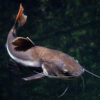

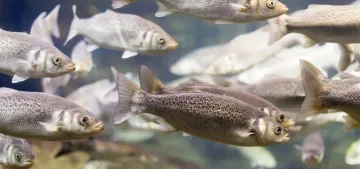

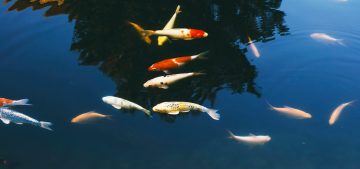
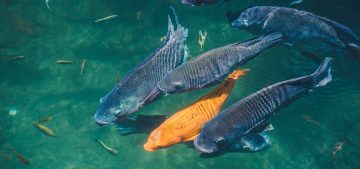
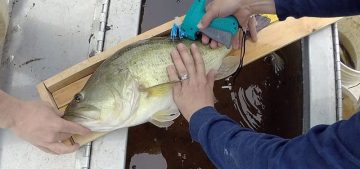
Add comment